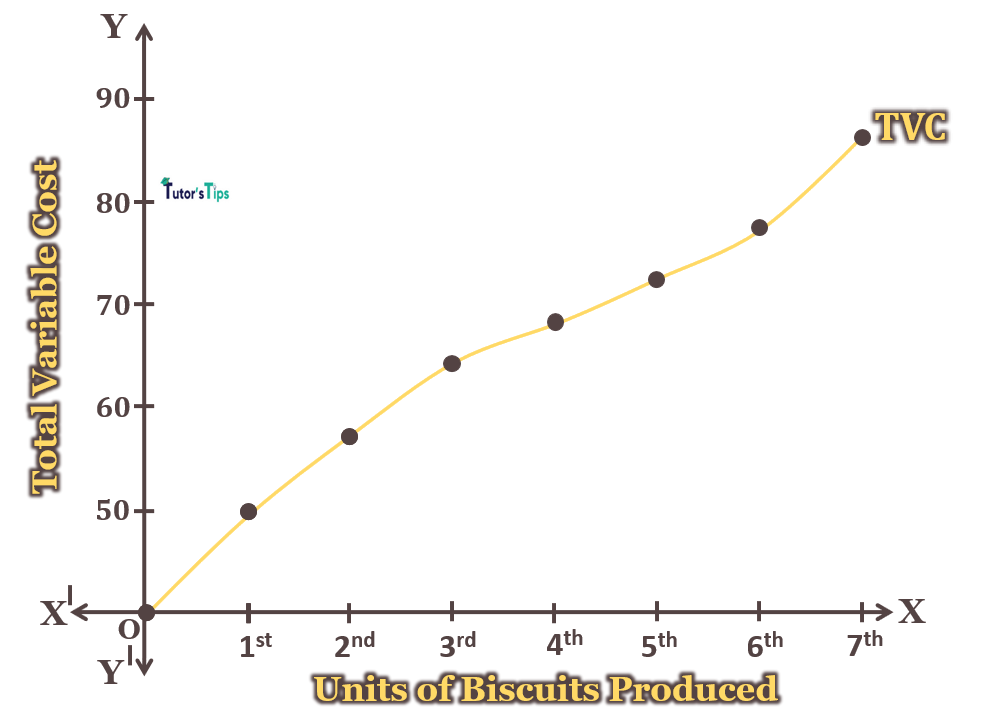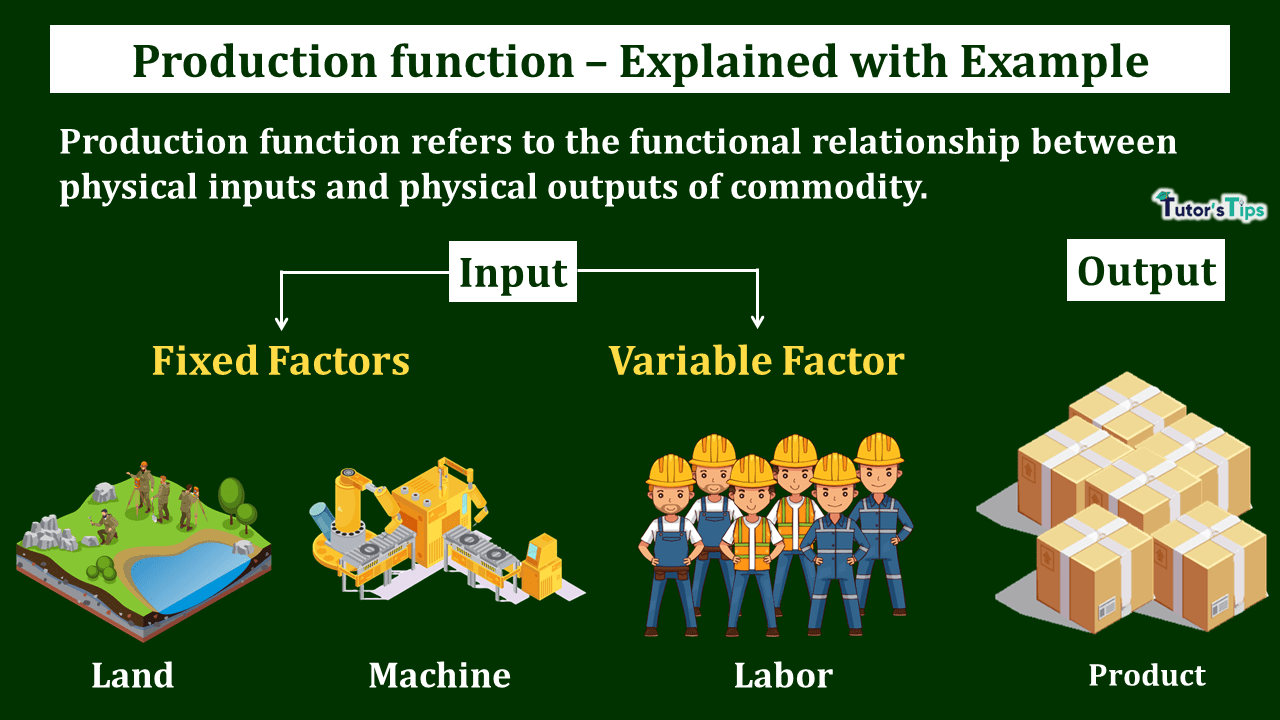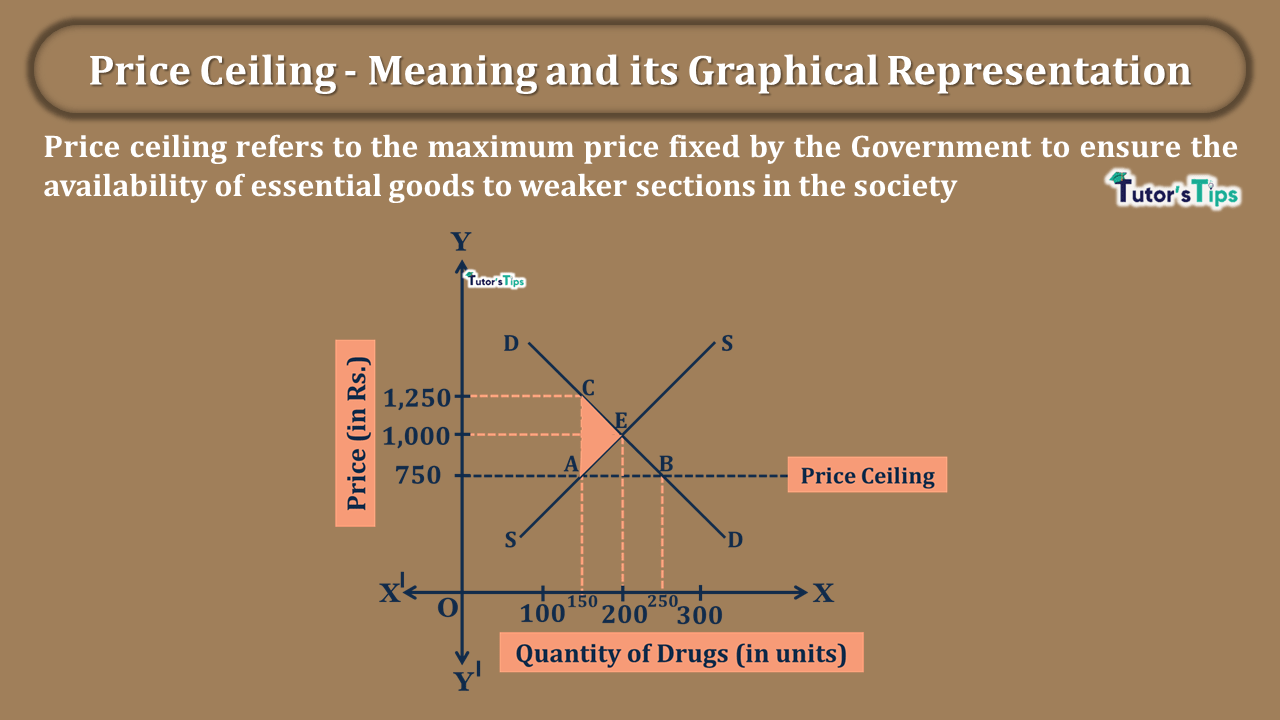Fixed Cost and Variable cost constitute the total cost in the short run. As in this period, some factors are fixed and some are variable. Therefore, Short-run costs include; Fixed Costs and Variable Costs.
Short Run Costs:
It is the period in which some factors are held constant and some are variable. Since the short-run costs are closely related to short-run productivity, for each measure of short-run productivity, there is a counterpart. Just as there are variable and fixed inputs, there are also fixed and variable costs. In short, Cost is the reciprocal of productivity.
Total Cost:
It refers to the total cost of all the resources used to produce any particular output. For the short term, we can classify the cost into fixed and variable like the factors.
Therefore,
In this period, the total cost can be expressed as:
TC = TFC + TVC
Here,
TC denotes Total Cost
TFC denotes the total fixed costs
TVC denotes the total variable costs
Advertisement-X
Therefore, it can be written as:
Total Cost = (Total Fixed Costs) + (Total Variable Costs)
Here, the total fixed costs refer to the expenditure incurred on Fixed factors of production and Total variable costs refers to the total expenditure incurred on variable factors of production.
In the words of Browning,
“Total Cost is the sum of total fixed cost and total variable cost for each output level.”
Hence, the total cost comprises of all the costs whether related to fixed inputs or variable inputs. It always increases with the increase in output as more output requires more inputs.
Fixed Cost :
It represents the expenditure incurred on the use of fixed factors of production. Total Fixed cost can be calculated as:
TFC = Units of fixed factors used × Price of Factor
These are the costs which do not change with the change in the output. In the short term, these costs do not vary with the level of output. Therefore, It remains the same whether the output is zero or maximum. These are also known as supplementary costs, overhead costs, historical costs, Unavoidable costs or indirect costs.
Illustration:
Suppose, A manufacturer makes 5 units of biscuits in one-hour using a machine as a fixed factor. The Cost of hiring that machine amounts to Rs 50 for an hour. Therefore, Rs.50 would be the fixed cost for the manufacturer whether no output is there or 5 units are produced. From 0 units to 5 units, the fixed cost will remain the same.
Advertisement-X
Thus, it can be shown with the following table:
| Units of Output produced | Total Fixed Cost (Rs) |
| 0 | 50 |
| 1 | 50 |
| 2 | 50 |
| 3 | 50 |
| 4 | 50 |
| 5 | 50 |
| 6 | 50 |
| 7 | 50 |
The above table shows that fixed cost remains constant at Rs 50 whether the output is zero or 5 units. Its graphical representation of Fixed Cost can be explained:

In fig, X-axis shows the units of output produced and Y-axis shows the total fixed cost. TFC is the total fixed cost curve and it is parallel to the X-axis representing the constant cost at all levels of output. This curve touches the Y-axis at point A which indicates that the total fixed cost remains Rs 50 when there is no output.
Some of the examples of fixed cost are:
- Expenditure on Machinery and Plant
- Licence fee
- Expenditure on Land and Building
Variable Cost:
It refers to the cost which is incurred on variable inputs of production. These are the costs which change with the change in the output. Thus, It means when the output increases, the variable costs increase and it decreases with the fall in output. Also, this cost falls to zero when there is no output. These costs are also known as Prime costs or Direct costs or Avoidable Costs.
Some of the examples of Variable Costs are:
- Expenditure on purchase of raw material
- Wages to labour
- Expenditure on electricity
- Wear and tear Expenses
Representation of Variable Cost:
It can be explained with the following table and graph:
| Units of Output Produced | Total Variable Cost |
| 0 | 0 |
| 1 | 50 |
| 2 | 58 |
| 3 | 64 |
| 4 | 68 |
| 5 | 72 |
| 6 | 78 |
| 7 | 86 |
The above table shows that as the output increases, the total variable cost also increases. But, when the output is zero, the total variable cost is also zero. It can also be explained with its graphical representation:

In fig, the X-axis shows the units of output and Y-axis shows the total variable cost. TVC is the total variable cost curve having an upward slope indicating increasing variable cost with the output. Here, it is evident that the TVC curve is an inverse S-shaped representing the law of variable proportions. According to this, at the initial stage, with more variable factor and constant fixed factor, the output increases and average variable costs falls. This continues until the optimum combination of a fixed and variable factor is reached. Beyond this point, the increase in the variable factor with the fixed factor results in the decline in the output and average variable costs rises.
Relationship between Fixed and Variable Cost:
As we discussed, the short-run total cost is the sum of total fixed and variable costs. The relation between fixed and variable costs can be explained with the following table and graphical representation:
Advertisement-X
| Units of Output | Total Fixed Cost(Rs) | (TVC)Total Variable Cost(Rs) | Total Cost |
| 0 | 50 | 0 | 50 |
| 1 | 50 | 50 | 100 |
| 2 | 50 | 58 | 108 |
| 3 | 50 | 64 | 114 |
| 4 | 50 | 68 | 118 |
| 5 | 50 | 72 | 122 |
| 6 | 50 | 78 | 128 |
| 7 | 50 | 86 | 136 |
The above table shows the total cost as the aggregation of fixed and variable costs. In the table, it is clear that With an increase in output, total cost also increasing. At zero output, there is only a fixed cost although the variable costs are zero.

In fig, X-axis shows the units of biscuits produced and Y-axis shows the cost. TFC is the total fixed cost curve and TVC is the total variable costs curve. Moreover, TC is total cost curve showing aggregation of fixed and variable costs. At point O, Output is zero, but the fixed cost is Rs 50. Therefore. total cost would be Rs.50. Difference between the variable and total costs is uniform and equivalent to fixed cost. Hence, the distance between TFC and TVC is the same throughout the length. In other words, TVC and TC are parallel to each other.
Thanks, and please share with your friends
Comment if you have any questions.
References:
Introductory Microeconomics – Class 11 – CBSE (2020-21)







4 Comments